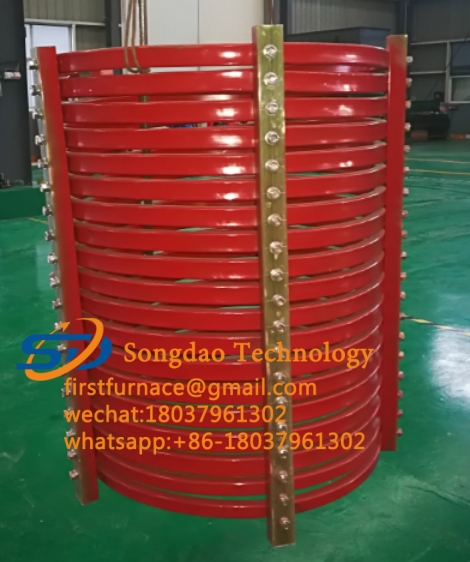- 05
- Oct
Analysis on the Causes of Insulation Damage on the Ring Surface of Induction Melting Furnace
Analysis on the Causes of Insulation Damage on the Ring Surface of Induction Melting Furnace

The main reason for the insulation damage on the surface of the furnace ring is that the working environment of induction melting furnaces is mostly harsh. Although there is a water-cooling system, it cannot ensure that the insulating paint works in a lower temperature environment. This is mainly due to the following reasons:
1. The induced current passing through the furnace ring has a skin response, that is, the current is mainly concentrated on the surface of the copper tube. The higher the frequency of the induced current, the greater the surface current density. Therefore, the heat of the furnace ring copper tube is concentrated on the surface, and the temperature of the surface in contact with the insulating paint is much higher than the temperature of the part in the copper tube that is in contact with the cooling water. Even under normal circulating water cooling conditions, the temperature of the outlet water is controlled at 50-60°C, and the temperature of the copper pipe surface will exceed 80°C.
2. The conduction heat of molten steel in the furnace. The thicker lining of the new furnace can prevent the heat of the molten steel in the furnace from being transferred to the surface of the furnace ring. However, with the rapid erosion of the furnace lining in the later period, the lining becomes thinner in the later period, and the heat conducted by the molten steel to the surface of the furnace ring is much higher than that of the new furnace lining. The actual measurement surface shows that the temperature of the slurry layer in the furnace ring was around 80° when the lining was new (the thickness of the furnace was about 15cm), and the temperature of the slurry layer in the furnace ring had risen to close to 200°C in the later period of the lining (the thickness was about 5cm). At this time, the conventional insulating paint has been completely carbonized and failed.
3. The cooling capacity of the cooling water decreases, which is mainly caused by the influence of water quality. Cooling water is prone to scaling at high temperatures, especially in the northern and western regions where the water quality is harder. Cooling water scaling is prominent, clogging copper pipes, reducing water pressure, cooling capacity, and increasing temperature, which in turn accelerates scaling. . When this happens, the temperature of the surface of the copper pipe will rise rapidly, and the conventional insulating paint will be carbonized and destroyed in a short period of time.
